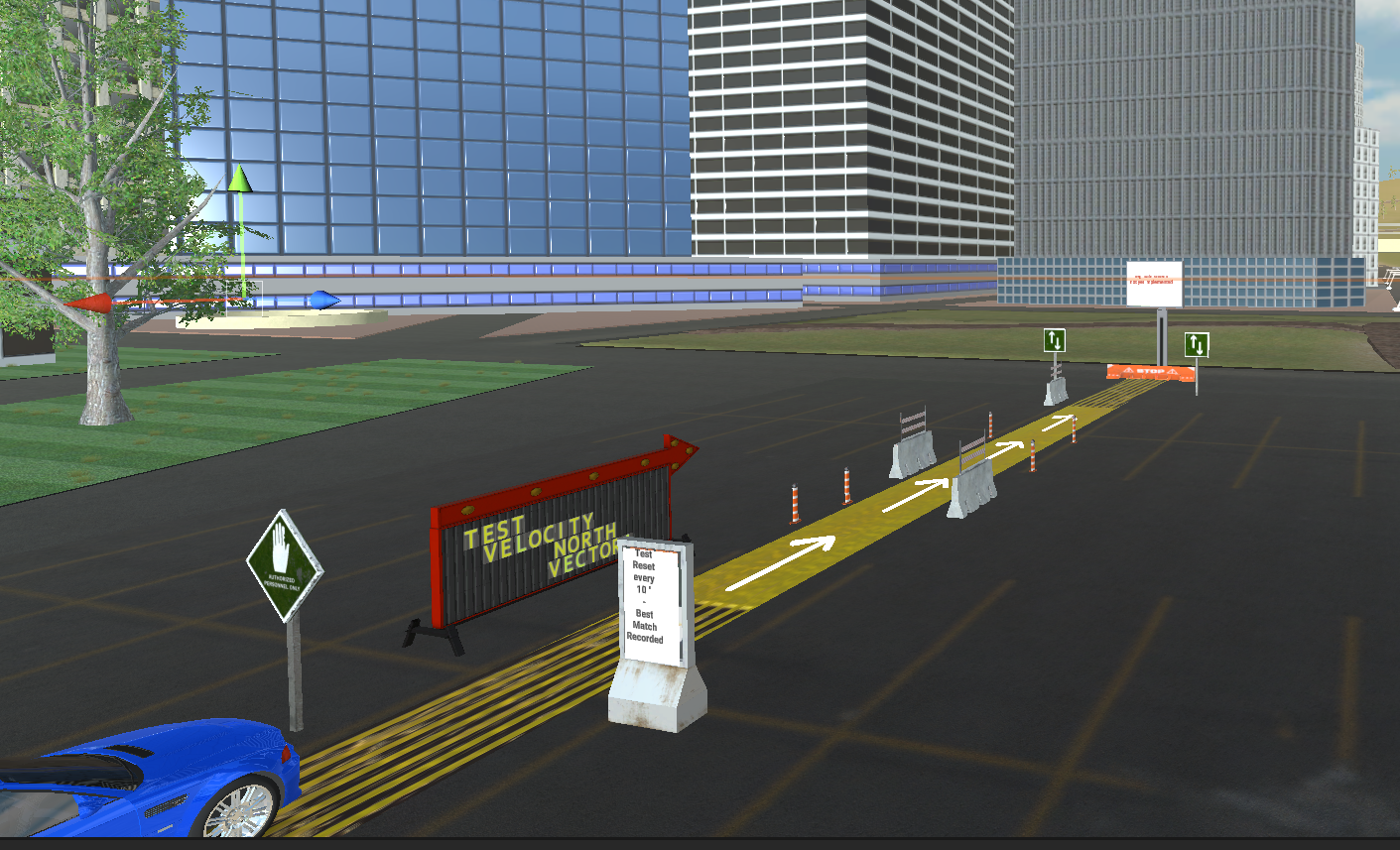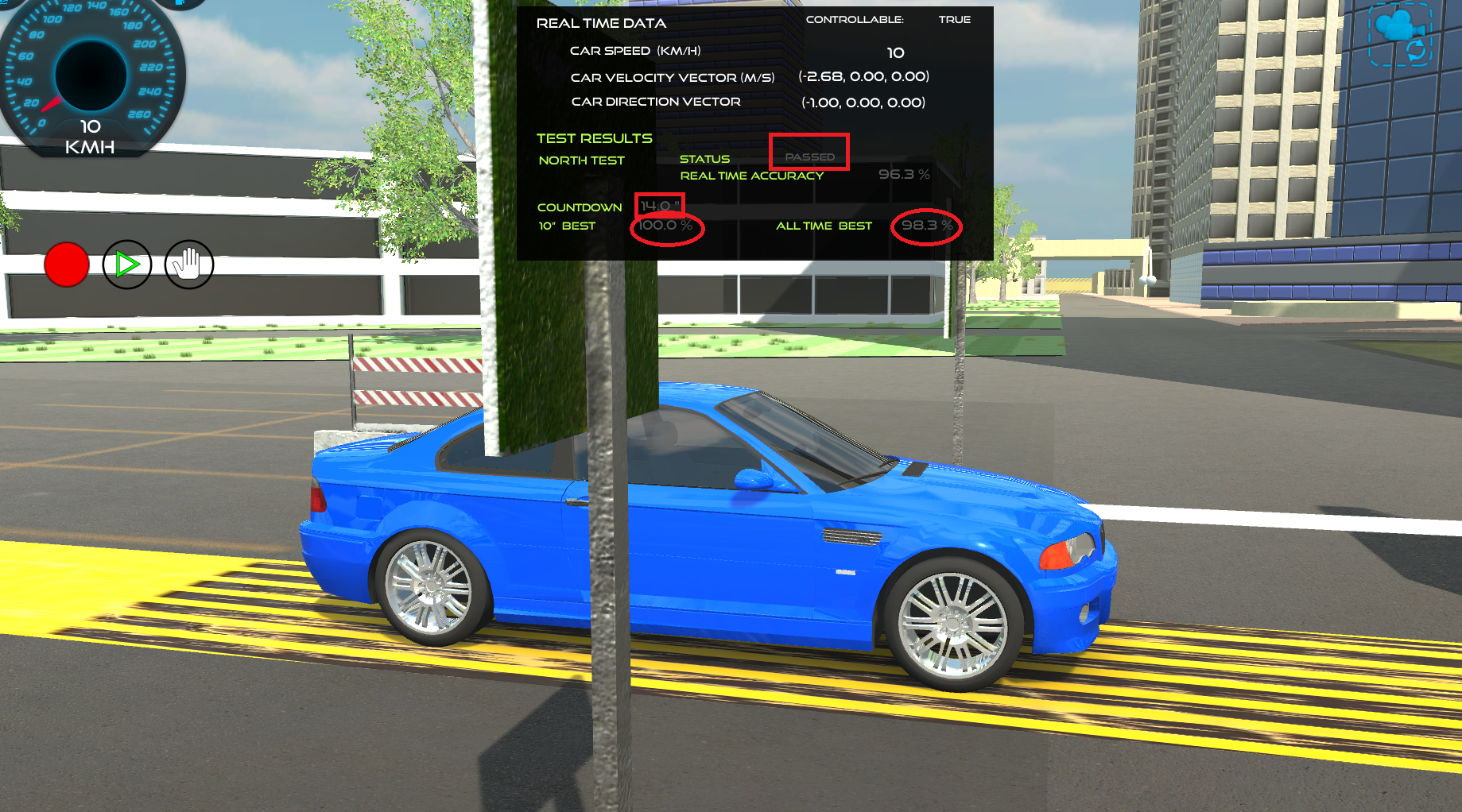I have improved my prototype to include a puzzle targeting one learning objective.
Former version allowed the player to drive all over the city and mountain but did not have a specific learning objective covered.
For this version, the player has to match the car’s velocity arrow with a defined target.
The learning objective is to explore both components of the velocity vector, its direction and magnitude. The vector is displayed as an arrow.
The target for this first puzzle is: direction North, speed of 10 km/h
Arrows displayed on the ground replicate the desired vector target.
The GUI shows real time data.
The car is already placed in the test corridor and set in “Test in Progress” mode.

Puzzle Mechanics:
Countdowns of 10 seconds allow the player to test the car’s motion and look at the accuracy of the match in percent.
As a player you drive the car using the usual keys and try to match the target.
Every 10 seconds the overall accuracy score is updated.
If accuracy is over 90%, the test is passed

Above, the test was passed with 98.3%. A new attempt is in progress and has reached 100%. At the end of the current countdown the all time best will update to 100%
Prototype URL:
Windows version download at: https://kay6.itch.io/engineer-your-way
the zip file is provided. Please download, decompress and run the .exe file. The app will open fullscreen. Close the window to stop the app (best to launch with 2 screens)
WebGL builds have failed not sure why. I am investigating
What is missing/Not yet included/Known issue:
- A compass that is also showing the relationship between North and the coordinate system. For now, Vector coordinates are provided in (x,y, z) format. The direction North is the vector (-1,0,0). Speed is converted from m/s to km/h using factor 3.6.
- Detecting the location of the car to initiate the “North Test in Progress” mode.
- Figuring out how to calculate accuracy when a player uses the reverse gear and other conundrums with other possible directions
- Update the on site board to show a big progress status
- Create graphics special effects and improve data display.
- There is an issue with the weak brightness on the GUI I have not been able to solve yet.
- Best match created by the player could be displayed as an arrow on the ground with the corresponding location on the ground
- There is no end to the puzzle, no time limit? A player could replay to reach 100%.
- The test is too easy?
- menu is not presented to explain the keys to use
